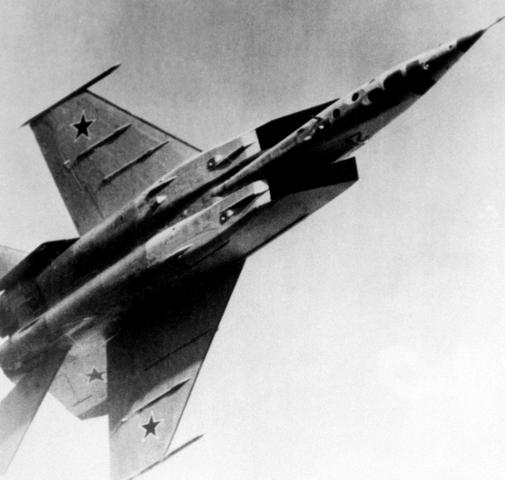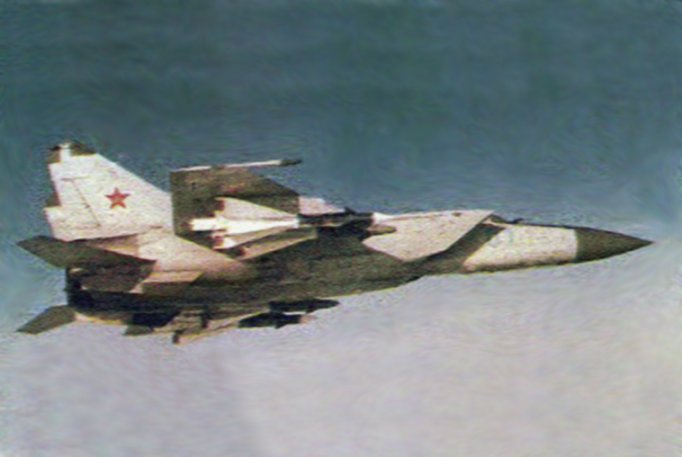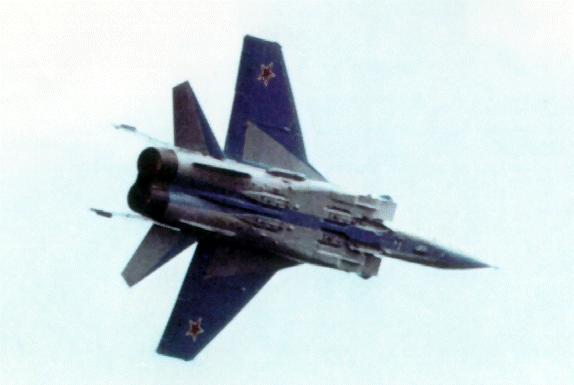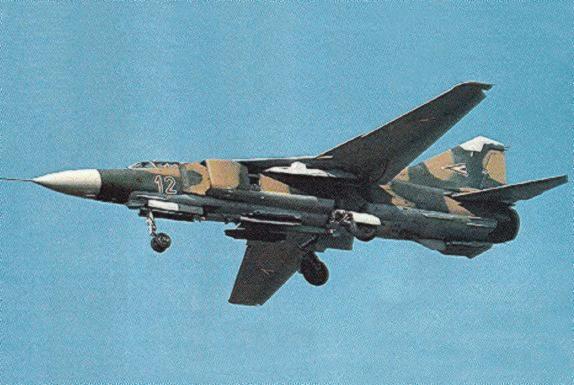Fastest manned planes in the world :
Find more details about these fansastic planes @ http://ankittyagi.4t.com/fastest.html
(disclaimer: Shameless self promotion)
1. SR-71 Blackbird (YF-12) Mach3.35 (85,000+ feet) It is the fastest aircraft propelled by air-breathing engines. The Blackbird's performance and operational achievements placed it at the pinnacle of aviation technology developments during the Cold War.
It is the fastest aircraft propelled by air-breathing engines. The Blackbird's performance and operational achievements placed it at the pinnacle of aviation technology developments during the Cold War.
The SR-71, unofficially known as the "Blackbird," is a long-range, advanced, strategic reconnaissance aircraft developed from the Lockheed A-12 and YF-12A aircraft. The first flight of an SR-71 took place on December 22, 1964.
History
It all began back in the mid 1950s when the United States Air Force and the CIA decided that it would be best to replace the U-2, an aircraft with something that would travel much faster and higher to avoid enemy defenses. Lockheed, the developer of the U-2 was also given the contract to develop this supersonic aircraft after a competition with Convair. The project was called ARCHANGEL and the Skunk Works, a division of the Lockheed Aircraft Corporation went through twelve design proposals before they reached their final design, the A-12.
The BoB (Bureau of the Budget) decided that it would be too costly to have both the SR-71 and the A-12 programs at the same time because both aircraft are very similar and do similar tasks. A-12 made its first flight in 1962, and SR-71 did not fly until 1964.
In November of 1967, the A-12 and the SR-71 conducted a reconnaissance fly-off to decide which aircraft was superior and worthy to keep. The final choice was the SR-71 but it is still debatable that the A-12 is superior.
The YF-12 was an SR-71 with an internal bay carrying three Hughes GAR-9/ AIM-47A air to air radar guided missiles, designed to shoot enemy airplanes flying at lower altitudes. Only three YF-12s were ever built.
Design
After the Air Force began to operate the SR-71, it acquired the official name Blackbird-- for the special black paint that covered the airplane. This paint was formulated to absorb radar signals, to radiate some of the tremendous airframe heat generated by air friction (the fuel was used as a heat sink for avionics cooling), and to camouflage the aircraft against the dark sky at high altitudes.
The SR-71 was one of the first aircraft to be shaped to have an extremely low radar signature. The aircraft flew so fast and so high that if the pilot detected a surface-to-air missile launch, the standard evasive action was simply to accelerate. Ironically, the SR-71 was one of the largest targets on the FAA (Federal Aviation Administration) long range radars, which were able to track the plane at several hundred miles. No SR-71 was ever shot down.
The SR-71 is a large aircraft that can be compared respectfully to the size of a Boeing 727. The SR-71 is approximately 103.876 feet excluding the nose probe, which is four feet, eleven inches. The wingspan of the airplane is 55.62 feet and the height is 18.5 feet

Operation
32 SR-71 airframes were built, 29 as SR-71As for operational missions and 2 as SR-71B trainers. The 32nd airframe was fabricated in 1969 as a hybrid trainer designated the SR-71C by mating the back half of an YF-12 wrecked in a 1966 landing accident with a fully functional SR-71 forward section of a static test specimen. Of all SR-71s, 12 (including one trainer) were lost in flight ( or ground ) accidents. Only one crew member, Lockheed test RSO Jim Zwayer, was killed from a flight accident. The rest of the crew members ejected safely or evacuated their aircraft on the ground.
The United States Air Force retired its fleet of SR-71s on January 26, 1990, allegedly because of a decreasing defense budget and high costs of operation. The argument was that the aircraft could be replaced with today's spy satellites and maintaining the plane was too costly. This early retirement decision was realized to have been a large mistake and in September of 1994, Congress voted to allocate 100 million dollars for the reactivation of three SR-71s. The USAF returned the SR-71 to the active Air Force inventory in 1995 and began flying operational missions in January 1997. The planes were permanently retired in 1998.
Records
The SR-71 remained the world's fastest and highest-flying operational aircraft throughout its career. From an altitude of 80,000 ft (24 km) it could survey 100,000 miles2·h-1 (72 km2·s-1) of the Earth's surface. On July 28, 1976, an SR-71 set two world records for its class: an absolute speed record of 2,193.167 mph (3,529.56 km·h-1) and a US "absolute altitude record" of 85,068.997 feet (25,929 m). Only the Soviet MiG-25 'Foxbat' high-altitude interceptor broke the record, reaching an altitude of 37,650 m on August 31, 1977.
The SR-71 also holds the record for flying from New York to London: 1 hour 54 minutes and 56.4 seconds, set on September 1, 1974. (For comparison, commercial Concorde flights took around 3 hours 20 minutes, and the Boeing 747 averages 7 hours.)
The Anglo-French Concorde is the only aircraft besides the SR-71 that can fly at supersonic speeds for hours at a time.
2. MiG-25R Foxbat-B: Mach 3.2 (123,524 feet)

The Foxbat is a high-performance, high-altitude interceptor.
There are several versions of this aircraft: A--basic interceptor; B--reconnaissance; C--two-seat trainer; D--reconnaissance with a modified radar; and E. The FOXBAT A aircraft, originally designed to counter high-altitude threats, has been converted to FOXBAT E, providing a limited low-altitude look-down and shoot-down capabilities somewhat comparable to FLOGGER. The wings are high-mounted, swept-back, and tapered with square tips.
The aircraft has two turbojet engines and large rectangular air intakes below the canopy and forward of the wing roots. There are dual exhaust. The fuselage is long and slender with solid, pointed nose. The aircraft is box-like from the air intakes to rear section. It has a bubble canopy. On the tail are twin, sweptback, and tapered fins with angular tips. There are flats mid- to low-mounted on fuselage, swept-back, and tapered with angular tips.
The majority of the on-board avionics were based on vacuum tube technology, not solid-state electronics. Though the Mig-25's electronics were ridiculed in the West, many experts found it ingenious and quite practical to use vacuum tubes as, compared with transistor technology, they were less susceptible to radiation in case of nuclear warfare. More practically, however, the vacuum tubes were easy to replace in remote northern airfields where sophisticated transistorized parts may not have been readily available. The MiG-25, as with all Soviet aircraft, was designed to be as rugged as possible. Since the MiG-25 is a 'straight line' fighter that was designed for high-altitude, high-speed operations, maneuverability and low-altitude performance had to be sacrificed.
The MiG-25 was designed as a counter for the A-12, not the XB-70. It had been widely held that the MiG-25 was a counter to the XB-70, but recent revelations by the MiG OKB (notably by R.A. Belyakov, the OKB's current head) have dispelled this myth.
The MiG-25 reached operational status in the Soviet Air Force on April 13, 1972.

The MiG-25 was capable of exceptional performance, including a maximum speed of Mach 3.0 and a ceiling of 90,000 ft (27,000 m). Some believed that the MiG-25 was designed against the SR-71 Blackbird, made to deter, or at least threaten the high altitude, high speed aircraft. However, its maneuverability, range, and close combat potential were extremely limited. Even its tremendous speed was problematic: although the available thrust was sufficient to reach Mach 3.2, a limit of Mach 2.8 had to be imposed to prevent total destruction of the engines.
Even with that, it took a large degree of piloting skill to even throttle the engines to Mach 2.8 without overspinning the turbines, thus ruining them. The limited maneurability of the Mig-25 is still considered to be better than its NATO rival SR-71.
The airspeed indicator was redlined at Mach 2.8, and pilots were required not to exceed Mach 2.5. The Americans had witnessed a MiG-25 flying at Mach 3.2 over Israel in 1973, but it is said that the flight had resulted in the total destruction of its engines.
A true understanding of the attributes and failings of the MiG-25 came in 1976. On 6 September of that year a PVO pilot, Lt. Viktor Belenko, defected to the West, landing his MiG-25P 'Foxbat-A' at Hakodate airport in Japan.
Although Viktor Belenko's aircraft was eventually returned to the USSR, it was first dismantled and carefully analysed by the Foreign Technology Division; now called the National Air and Space Intelligence Center of the USAF. After 67 days the aircraft was returned to the Soviets in pieces.
About 1,190 MiG-25s were produced before production ended in 1984, and the type was exported to Algeria, Bulgaria(until 1992), Egypt, India, Iraq, Libya, and Syria. Modest numbers remain in service.
Source: http://www.vectorsite.net/avmig25_1.html
Records
In September 1967, a MiG-25 set a world speed record at 1,853.61 miles per hour (2,982 kph). It stood for more than a decade, until broken by an American SR-71 Blackbird in July 1976. It reached 2,016 mph (3,244 kph). On July 25, 1973, a Ye-266, using the same airframe as the MiG-25 but equipped with more powerful engines, set the world’s absolute altitude record for a ground-launched air-breathing aircraft, reaching 118,867 ft. (36,230 m). On August 31, 1977, the record was broken by a modified MiG-25 (E-266M) and taken to 123,524 ft. (37,650 m).
3. MiG-31 Foxhound Mach 2.83 (67,600 feet)

The MiG-31 is a high-speed strategic interceptor developed to replace the MiG-25. It was the most advanced interceptor fielded by the Soviet Union before its dissolution.
First flown, as Ye-155MP (originally MiG-25MP), 16 September 1975.
The MiG-31 was the first Soviet fighter to have true look-down, shoot-down capabilities.
It is fitted with the SBI-16 Zaslon phased array radar system, which is one of the most powerful fighter radars in the world.
Mig-31 Vs Mig-25
Mig-31 was, strengthened to permit supersonic flight at low altitude.It had more powerful engines than MiG-25. Unlike Mig-25 which compromised on many other features in favour of speed the major requirement of Mig-31 was increased range, not speed.
Mig-31 was equipped with advanced digital avionics.
Zaslon radar was first electronically scanned phased-array type to enter service, enabling MiG-31 to track 10 targets and engage four simultaneously, including targets below and behind its own location; fuselage weapon mountings added; crew increased to two. Wing anhedral 4 degrees from roots; sweepback approx 40 degrees on leading-edge, 32 degrees at quarter-chord, with small sharply swept wingroot extensions; all-swept tail surfaces, with twin outward canted fins and dihedral horizontal surfaces.
The MiG-31 proved to be extremely capable when originally introduced, and was sought after for a variety of long-range missions. Following the collapse of the USSR, however, the budget for spares and maintenance collapsed, leaving many squadrons unable to maintain their complex aircraft.
By 1996 only 20% of remaining aircraft were reportedly serviceable at any time.
About 500 MiG-31s were produced, approximately 280-300 of which remain in Russian service, with another 30 or so in Kazakhstan.
4. F-15 Eagle Mach 2.5 (60,000 feet)
 The F-15 Eagle is an American-built all-weather tactical fighter designed to gain and maintain air superiority in aerial combat.
The F-15 Eagle is an American-built all-weather tactical fighter designed to gain and maintain air superiority in aerial combat.
It first flew in July of 1972.
The F-15's maneuverability is derived from low wing loading (weight to wing area ratio) with a high thrust-to-weight ratio enabling the aircraft to turn tightly without losing airspeed. The F-15 can climb to 30,000 ft. in around 60 seconds. The weapons and flight control systems are designed so one person can safely and effectively perform air-to-air combat.
Kill Record
As of 2005, the F-15 in all air forces has a combined kill record of 104 kills to zero losses in air combat (at least as confirmed by its users, and excluding the case of a Japanese F-15J that shot down another F-15J in 1995 due to an AIM-9 Sidewinder safety malfunction during air-to-air combat training with live weapons). To date, the air superiority version of the F-15 (F-15A/B/C/D models) has never been shot down by an enemy aircraft (which is disputed), although some F-15s have been claimed by surface-to-air missiles of the Syrian Air Force.
A derivative of the aircraft is the F-15E Strike Eagle, a highly successful all-weather strike fighter which entered service in 1988.
5. F-111 Aardvark Mach 2.5 (60,000+ feet)
 The General Dynamics F-111 is a long-range strategic bomber, reconnaissance, and tactical strike aircraft.
The General Dynamics F-111 is a long-range strategic bomber, reconnaissance, and tactical strike aircraft.
Service life
The F-111 was in service with the USAF from 1967 through 1998. It entered active service with the Royal Australian Air Force in 1973 and is currently scheduled to remain with the RAAF until 2010. There are concerns by some that this will leave a capability gap in the event of a delay in F-35 Joint Strike Fighter deliveries.
6. Su-24 Fencer Mach 2.4 (57,400 feet) 
The Sukhoi Su-24 was the Soviet Union's most advanced all-weather interdiction and attack aircraft in the 1970s and 1980s. The two-seat, twin-engined aircraft, which carried the USSR's first integrated digital nav/attack system, resembles the American General Dynamics F-111 Aardvark, although its capabilities are more comparable to the European Panavia Tornado IDS. It remains in service with the Russia and various export nations.
7. Tu-144 Charger Mach 2.35 (59,055 feet) 
The Tupolev Tu-144 was a supersonic airliner constructed under management of the Soviet Tupolev design bureau headed by Alexei Tupolev (1925–2001).
Western media nicknamed the plane Concordski (sometimes Konkordski), sounding like a Russian surname yet still very close to Concorde, to which Tu-144 was visually similar. A prototype first flew on December 31, 1968 near Moscow, two months before the Concorde. The Tu-144 first broke the sound barrier on June 5, 1969, and on July 15, 1969, it became the first commercial transport to exceed Mach 2.
In service
The Tu-144S went into service on December 26, 1975, flying mail and freight between Moscow and Alma-Ata in preparation for passenger services, which commenced in November 1977 and ran a semi-scheduled service until the first Tu-144D experienced an in-flight failure during a pre-delivery test flight, and crash-landed with crew fatalities on May 23, 1978. The Aeroflot flight on June 1, 1978 would be the Tu-144's 55th and last scheduled passenger service.
A total of 16 airworthy Tu-144s were built: the prototype Tu-144 reg 68001, a pre-production Tu-144S reg 77101, nine production Tu-144S reg 77102–110, and five Tu-144D reg 77111–115. There was also at least one ground-test airframe constructed for static testing in parallel with the prototype 68001 development.
7. MiG-23 Flogger Mach 2.35 (60,700 feet)

infrared guided weapons and tremendous speed (Mach 2.35) to counter its adversaries. The MiG-23 was designed in 1964-66 as a successor to the MiG-21. In addition to a much more powerful engine, the MiG-23's most significant new feature was its variable sweep wing. Like the USAF's swing wing F-111, the sweep of the wings could be changed in flight. Fully spread, this gives a shorter takeoff/landing roll while carrying a heavier weapons load. With the wings fully swept back, the MiG-23 has greater speed. The wing has three sweep settings: 16, 45, and 72 degrees. The prototype first flew in April 1967 and MiG-23s began entering operational service in 1971.
The aircraft is in widespread use in Eastern Europe and the Middle East. The MiG-23/27 FLOGGER series of aircraft has been used extensively by the former Soviet Union and its Warsaw Pact allies including Poland, Hungary, Bulgaria, East Germany, Rumania, and Czechoslovakia. Other countries including Libya, Syria, Egypt, India, Cuba, Algeria, Iraq, Afghanistan and North Korea have imported FLOGGERS.
7. Su-27 Flanker Mach 2.35 (59,055 feet) :

The introduction, in the mid-1970s, of the USAF F-15 Eagle and F-16 Fighting Falcon put the then Eastern bloc fighter pilots at a distinct disadvantage. The deployment of the Su-27 Flanker and MiG-29 Fulcrum in the mid-1980s leveled the playing field. Designed as a high performance fighter with a fly-by-wire control system, and the ability to carry up to 10 AAMs, the highly maneuverable Su-27 is one of the most imposing fighters ever built. The first 'Flanker-A' prototypes flew on May 20, 1977 and entered service as the 'Flanker-B' in 1984. The development of the Su-27 fighter plane was completed in the early 1980s, and the plane subsequently set more than 40 world records of altitude and take-off-speed. It was the forerunner of an entire family of planes, including the Su-27UB training plane, the Su-33 ship-based fighter, the Su-37 multi-mission plane and the Su-32FN two-seat specialised plane. The Su-27UB is a two seat training version of Su-27, which first flew in March 1985.
10. F-14A Tomcat Mach 2.34 (58,000+ feet):

The F-14 Tomcat is a United States Navy supersonic, twin-engine, variable sweep wing, two-seat interceptor. The Tomcat's primary missions are air superiority and fleet air defense, though it later acquired the ability to strike ground targets with precision munitions. It entered service in 1972 with the USN, replacing the F-4 Phantom II. It will be retired from the USN in 2006, replaced by the F/A-18E/F Super Hornet.
11. F-106 Delta Dart Mach 2.31 57,000 feet
12. IAI Kfir Mach 2.3 75,000 feet
12. English Electric Lightning Mach 2.3 60,000 feet
12. MiG-29 Fulcrum Mach 2.3 59,060 feet
12. F-107 Ultra Sabre Mach 2.3 48,000 feet
16. Tornado ADV Mach 2.2 69,997 feet
16. F-4 Phantom Mach 2.2 62,250 feet
16. Mirage 2000 Mach 2.2 59,055 feet

 machal Pradesh to normal sized parents, Singh is one of eight siblings (his grandfather although was very tall). As a child, Singh did it all — farm labour on their small land-holding, breaking stones, guarding a gun house. His meals were the normal staple. His growth was anything but. At 16, he stood at five feet nine inches. Five years later, he added a foot to it.
machal Pradesh to normal sized parents, Singh is one of eight siblings (his grandfather although was very tall). As a child, Singh did it all — farm labour on their small land-holding, breaking stones, guarding a gun house. His meals were the normal staple. His growth was anything but. At 16, he stood at five feet nine inches. Five years later, he added a foot to it.












